This review was provided for free using a temporary demo bike provided by Rad Power Bikes Canada. My goal is to be transparent and unbiased with you, this video and writeup are not meant to be an endorsement of RPB products. I welcome your corrections, additions, and feedback in the comments below, and the Rad Power Bikes electric bike forums.
Observations:
- Having reviewed the original RadRunner 1 in 2019, I was able to distill the precise differences for this second generation bike which include: slacker head tube angle (71° vs. 68°) for improved stability and slower turning, 15mm thicker saddle, refined paint job (fewer accents on the downtube and rear rack), and motor power cable relocated to left side of the frame (protected by chain stay and disc brake rotor).
- The bike is still available in satin black and forrest green, there’s only one frame size but the extra long 390mm seat post and high rise handlebar provide great fit options, Rad has opened new showrooms and expanded their mobile service build+delivery van fleet, prices have increased in late 2021 and this model costs $200 more than in 2019.
- For an additional ~$400, you can purchase the RadRunner Plus which comes with an upgraded LCD display (that has a USB charging port), a 7-speed drivetrain vs. single speed, side mounted kickstand vs. center, aluminum alloy pedals vs. plastic, the passenger kit (pegs, extended seat cushion, skirt guard), plastic fenders, faux leather stitched grips, an adjustable suspension fork vs. rigid steel, and an upgraded 500 lumen headlight. That model has a slightly different geometry to accommodate the longer fork, and it only comes in one color (silver).
- This is a Class 2 electric bike with cadence sensing pedal assist and variable speed twist throttle. The motor power rating will vary depending on geography with 750 watts for the US, 500 watts for Canada, and 250 watts for Europe based on the corresponding legal limits.
- Rad Power Bikes appears to have good inventory, even as some other ebike companies struggle due to supply chain constraints. I believe that they chartered a private boat equipped to handle hazardous goods (batteries) to maintain a steady flow of products.
Pros:
- Despite the relatively low price point, this ebike comes with a high capacity battery, powerful motor (meeting the maximum spec for each geography where it is sold), puncture resistant reflective tires, and integrated lights. For a bit extra, they can assemble and delivery it in most major cities. Rad seems to have a good supply of replacement parts and support their battery packs over many generations, so your bike can be maintained and repaired. It might also hold a higher resale value based on the name brand recognition.
- I’m told that the headset and bottom bracket use sealed cartridge bearings, which reduce rust and noise and should last longer. This is a small thing that’s difficult to see, and isn’t always the case on more affordable electric bicycles.
- Safety is a big deal to me, especially on a lower bike like this (with smaller 20″ wheels), so the reflective tires and integrated lights are very nice to see. Note that the headlight has side cutouts to be visible from more angles and the rear light has a button to change from solid to flashing mode. When braking, the rear light also goes extra bright! For a bit extra, you can replace the stock headlight with an even larger and brighter 500 lumen premium headlight that comes standard on the RadRunner Plus.
- This ebike uses the same high-capacity battery pack as most of the other current-generation Rad Power Bikes (just not the RadRover Plus or RadCity Plus, which use the semi-integrated pack (not compatible), and not the RadMission, which has a lower capacity battery (is compatible)). In short, you can share this same battery between older generation RadRover, RadCity, RadWagon, and RadMini models.
- The battery pack can be charged on or off the bike frame, locks securely into place, contains two fuses for safety, the mounting bracket is sturdy and attaches with three bolts vs. two on some competing products. They used high quality Samsung 35E Lithium-ion cells, and the pack is fairly affordable to replace because it’s standardized and the controller is separate. I also like that the locking cylinder built into the battery has an unlocked, locked+off, and locked+on position so you can leave the pack locked to the frame (but powered off) so people won’t be able to tamper with the display or throttle. Note that the 4-LED charge level indicator will not work if the battery is in the locked+off position.
- Unique adjustable high-rise handlebar can angle forward or back to significantly change reach. The extra long 390mm seat post accommodates taller riders, allowing for efficient leg extension while pedaling. Most competing “minibikes” or “utility bikes” don’t have the adjustability offered here, and aren’t as enjoyable to pedal in my experience.
- The smaller wheels position the frame close to the ground, and the step-thru frame style provides a low standover height. The bike is very easy to approach and handle, even when loaded with gear, but the frame doesn’t flex very much because of large gusset plates at the steer tube and an additional mini top-tube connecting the downtube to the seat tube.
- High-volume tires, ergonomic grips, and brake levers with rubberized edges all contribute to comfort. I like to lower the tire pressure a bit to make the ride even smoother because I’m fairly light weight. The new 15mm thicker saddle is noticeably different and more comfortable than the first generation RadRunner, but you could also add a suspension seatpost here if it’s not enough. Just note that replacing the seatpost will force you to purchase a standard saddle to interface with it, because the proprietary saddle here requires a custom mounting plate that is welded to the seat post.
- Large 180mm mechanical disc brake rotors provide ample stopping power given the relatively small 20″ wheel diameter, they definitely come in handy if you’re riding with a passenger, child, or cargo in some of the optional racks and bags. The larger size also dissipates heat faster, but be careful not to bend them by forcing the front wheel into a crowded bike rack. Note also that the hub motor gets a mechanical advantage from the smaller wheels.
- Unique single speed drivetrain is above average. Rad Power Bikes is using a DNP nickel plated rear sprocket with 16 teeth, and a 52 tooth steel chainring with an aluminum alloy guide to prevent chain drops! Instead of using a sliding rear dropout (which is trickier to re-mount with disc brakes and may interfere with the chain line) Rad specced a chain tensioner. I love that they also included a steel derailleur guard to protect this tensioner during shipping and if the bike tips over, but the hanger is also replaceable if it gets bent!
- The original RadRunner 1 had the motor power cable routed along the right chainstay and entering into the axle below the derailleur guard. It was a decent setup, but the new bikes all place this cable on the left side of the frame positioned below and inside the chainstay and between the disc brake rotor. It’s extremely well protected here! Note that most cables are internally routed on this frame to look clean and reduce snags. There’s good neoprene cable wrap up front where the cable all meet too.
- Extra-thick 12 gauge spokes provide improved wheel strength, raising the max capacity of this ebike to 300lbs vs. 250lbs on many traditional ebikes (and 275lbs for most other current generation Rad Power Bikes). Note that the rims have been changed to single wall vs. double wall, which helps to reduce weight. I think the single wall still makes sense strength-wise here given the smaller wheel diameter.
- Bottle cage bosses on the downtube and lower top-tube section let you add accessories like bottle cages, a folding lock, or mini pump. However, you might consider the optional plastic console bucket thing, which is made from high quality plastic that’s designed to not fade or crack. Apparently lots of customers put a towel or pad in there and bring their pets along. I tried to overlay some photos of this in the video review above around time 22:36
- There are tons of options for mounting baskets and racks on this thing, I like how the front rack attaches to the head tube and won’t influence steering or dump to the side when parking. Rad Power Bikes has platforms, baskets, insulated bags, pannier bags, suspension seat posts, child seats, as well as cell phone holders and more back at their site. Note that the rear rack was designed with a Yepp! child seat window to work with a specific style of seat that’s super easy to install and remove.
- Kenda and Rad Power Bikes worked together to create a series of tires with reflective stripes and K-Shield puncture protection including these unique 20″ x 3.3″ K-Rad tires. They are the only tires I have ever seen in this size, and they fit the bike perfectly… not too big and bulky, not too small and stiff feeling, they are stable and capable on many types of terrain and allowed for some sporty fast turns during my ride tests! Consider lowering the pressure towards 5PSI to ride across really soft terrain like dry sand, wet loamy fields, or packed snow (though it probably won’t work as well as a true 4.0″ or 4.9″ wide fat tire).
- I like how the tubing surrounds the battery pack to some degree, for additional protection. The weight distribution here is pretty good, with battery weight low and center. Same thing goes for the accessory mounting points and optional console box.
- Pedal assist responds quickly because of the 14 pulse cadence sensor, which is smaller and better sealed against water and dust than some of the older larger external designs (which only use 5, 6, or 13 magnets). The motor cuts out instantly whenever you brake because both levers have motor inhibitor switches built in. In my opinion, the Rad Power Bikes controller is set to ramp power up smoothly. This means that even though the twist throttle and pedal assist are very responsive, the bike doesn’t feel too jarring or overwhelming.
- I really like that they chose brake levers with a bell that’s built into the left housing. It’s compact and keeps the handlebars clean but works reliably and produces a friendly chime. I also like that these are four finger levers, which provide extra stopping power. The levers have a rubberized edge for grip, comfort, and warmer engagement vs. cold metal. Also notice the large seat collar lever which is easier to loosen and tighten than some of the really small ones.
- The motor controller box is positioned under the main tube of the bike, and it feels safe there because of the metal chainring guide and skit plate below. I was told that the controller box is aluminum alloy vs. plastic, and that makes it extra tough. Mounting this box separately from the battery pack helps to keep the battery replacement prices lower and reduces heat transfer, which can be hard on lithium-ion cells. Store your battery packs in a cool dry location, and avoid letting them drain completely, because that can stress the cell chemistry.
- I noticed that the optional passenger pegs didn’t rattle or twist during use, they mount to a welded plate section with ridges that prevent spinning during use. The pegs fold up nicely, which reduces the possibility of scratching objects or people as you move the bike around. Note that the passenger kit comes with a clear plastic skirt guard for safety, and Rad now has a new passenger handhold bar kit.
- It’s cool that Rad Power Bikes has expanded to Canada and Europe with this model, it’s one of their more affordable bikes but I love that they didn’t go with the low capacity battery (like the RadMission has). It would be great for commuting, taking to Burning Man, or sharing with a family of different sized users because it’s just so approachable and flexible.
- For US and Canadian customers, the bike comes with a twist throttle that overrides assist 0-5 with full support. You don’t have to press any buttons to get power. This makes it a Class 2 ebike, even though you could remove the throttle to get Class 1 performance. In Canada, there is an on/off toggle switch that disables the throttle very easily. For European markets, they created “twist power assist” that changes the throttle into an override mechanism for adding power during pedal assist (as long as you’re still pedaling). This allows them to comply with Class 1 in Europe, but empower riders to add power without pressing lots of buttons or looking down! I think it’s pretty smart, and very satisfying to use.
Cons:
- The smaller wheel diameter brings the bike frame (and passenger) closer to the ground, which makes it less visible to cars. For that reason, I’m really glad that the bike has bright integrated lights that are visible from multiple angles and the tires have reflective stripes. Consider wearing reflective clothes, using reflective stickers (which Rad Power Bikes sells), adding reflective tags to your backpack, and getting a helmet with an integrated light to be extra safe. Rad also sells an optional premium super bright headlight for this model that comes stock with the RadRunner Plus.
- The bottom bracket is low because of the smaller wheels, which means there’s higher potential for log and curb strikes as you ride over obstacles. Thankfully, they used a metal chainring guide for protection, and even added a skid plate below the controller box.
- The smaller wheels have a high attack angle, making bumps and cracks feel more jarring than a full sized 26″ wheel. Thankfully, the width of the tires adds air volume that acts as a bumper suspension which reduces vibration.
- Weighing in at 64.6lbs as shown in the review pictures and video (without any fenders, racks, child seat, or other optional accessories), this is a fairly heavy ebike. I think that has to do with the reinforced frame, wider rims and tires, and the integrated rear rack. The bike is overbuilt to be sturdy and handle up to 300lbs total. It’s significantly lighter than the RadRunner Plus, which weighs 74.4lbs and includes the fenders, passenger kit, upgraded headlight, upgraded display, 7-speed drivetrain, and suspension fork.
- This electric bike only comes in one frame size. The adjustable high-rise handlebar and extra long 390mm seat post can accommodate a wide range of riders, but it could feel a bit tight for taller riders. For reference, I’m 5’9″ tall with a 31″ inseam and it felt very comfortable to me with the seat raised a bit.
- Mechanical disc brakes require more hand effort than hydraulic, especially the rear brake (right lever) which has a longer cable housing. Over time, the brake lines can settle in and require a bit of adjustment. They can also get dust and water inside vs. hydraulic lines, which are sealed. One benefit is that they tend to be easier to adjust and repair by end users than hydraulic.
- The upgraded extra-thick saddle felt fairly comfortable to me, but you cannot change the angle or slide it forward/back like almost all other traditional bicycle saddles. Rad fixed the small triangular seat to a flat plate which is welded to the seat post. It’s not a normal saddle mount… so you’ll need to replace the 27.2mm post if you do want to use an aftermarket saddle, and it won’t line up perfectly with the passenger kit when dropped all the way down. These are minor complaints, and I understand why the decisions were made, it just means things are more proprietary and fixed than most of the other Rad Power Bikes.
- Compared to most of the other Rad Power Bike models, I feel that this battery pack is more difficult to reach and remove. There’s tubing surrounding the pack and the seat clamp quick release lever needs to be angled up or open for the battery to slide up and be removed. It’s nice that the battery can be left on the frame when charging, and the charging port is high up and easy to reach on the right side.
- The battery charger only offers 2 amp output vs. some of the new faster chargers (3A, or even 4A). Given the higher capacity 672 watt hour battery pack on the RadRunner, it could be nice to have a faster charger. At least the stock charger is very compact, lightweight, quiet, and well shielded against electrical interference. I consider it to be very portable and appreciate that it’s cross-compatible with all of the other Rad Power Bike models.
- Rad Power Bikes sells mostly online, which means that there’s some extra hassle unboxing and configuring the bike for riding (attaching the front wheel and adjusting the stem and handlebar). For those who are willing to spend a couple hundred extra, Rad has launched a mobile delivery service with vans that will pro-built and drop off the product completely ready to ride.
- The optional console box looks really cool to me, but it does make the area where you pedal more cramped because it’s wider than the bike tubing, I like that it has four drain holes at the bottom but wish the lid locked and felt more secure. I bumped and squished it while pedaling (during my older review of the RadRunner) and the lid kind of got pushed out of place a couple of times. Also, securing the rubber band anchors took more time than a single latch would.
- Many car and bus racks utilize a hanging style rack for mounting bicycles. In order to mount wave style step-thru frames like the RadRunner, you will need to buy a crossbar adapter like this. If you use a platform rack, the wider tires might require longer ratchet straps or even wider trays to hold the bike securely.
- The double-leg kickstand is very sturdy, made of steel, and provides a lot of stability for loading cargo or a child seat. However, it hangs very close to the ground and the right leg is just below the chain. I noticed that the chain can bounce down and make contact, which could chip the paint and create some noise when riding over bumpy terrain.
- Compared to the original RadRunner, launched for the 2019 season, the price has increased by $200. I’d still consider this a very affordable ebike, and a great deal with the nice tires, lights, proprietary motor and high capacity battery, and good reputation of Rad. The big changes are new paint job, improved geometry for relaxed head tube angle, improved motor cable placement, and thicker saddle.
- The stock display panel is very basic and only shows assist level and battery charge level. You cannot tell how fast you’re going, how far you’ve gone, there’s no USB charging port, and the LED’s are fairly bright. For those who want a more refined interface with these additional features, consider the RadRunner Plus or the individual upgraded part that will work with this bike.
- Minor consideration here: if you get the front tray rack, the headlight will have to be repositioned and will no longer point where you steer. Instead, it will be fixed inline with the frame. Also, the stock plastic pedals just aren’t as stiff and tough as the upgraded aluminum alloy Wellgos that come with the RadRunner Plus. Consider buying them as upgrades from Amazon or in fun colors from Rad.
- This is a single-speed electric bike, which means your cadence is fixed regardless of how fast the bike is actually going. It tends to require more leg effort to start and then outpace at the higher speeds (though Rad seems to have optimized for the 15mph to 20mph speeds). It could be a challenge to pedal the bike manually if you run out of battery since the wider tires increase friction and the weight is fairly high here.



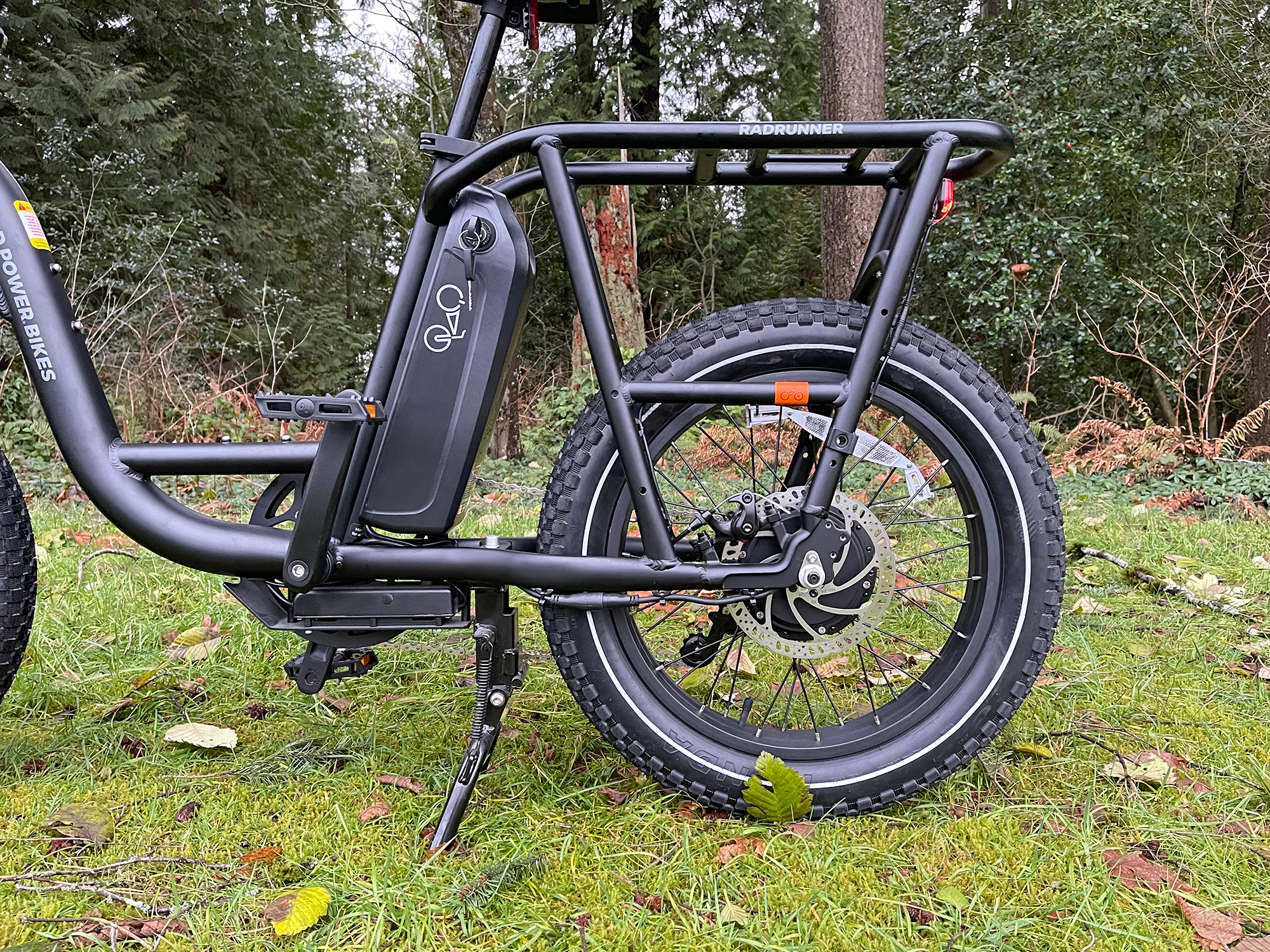
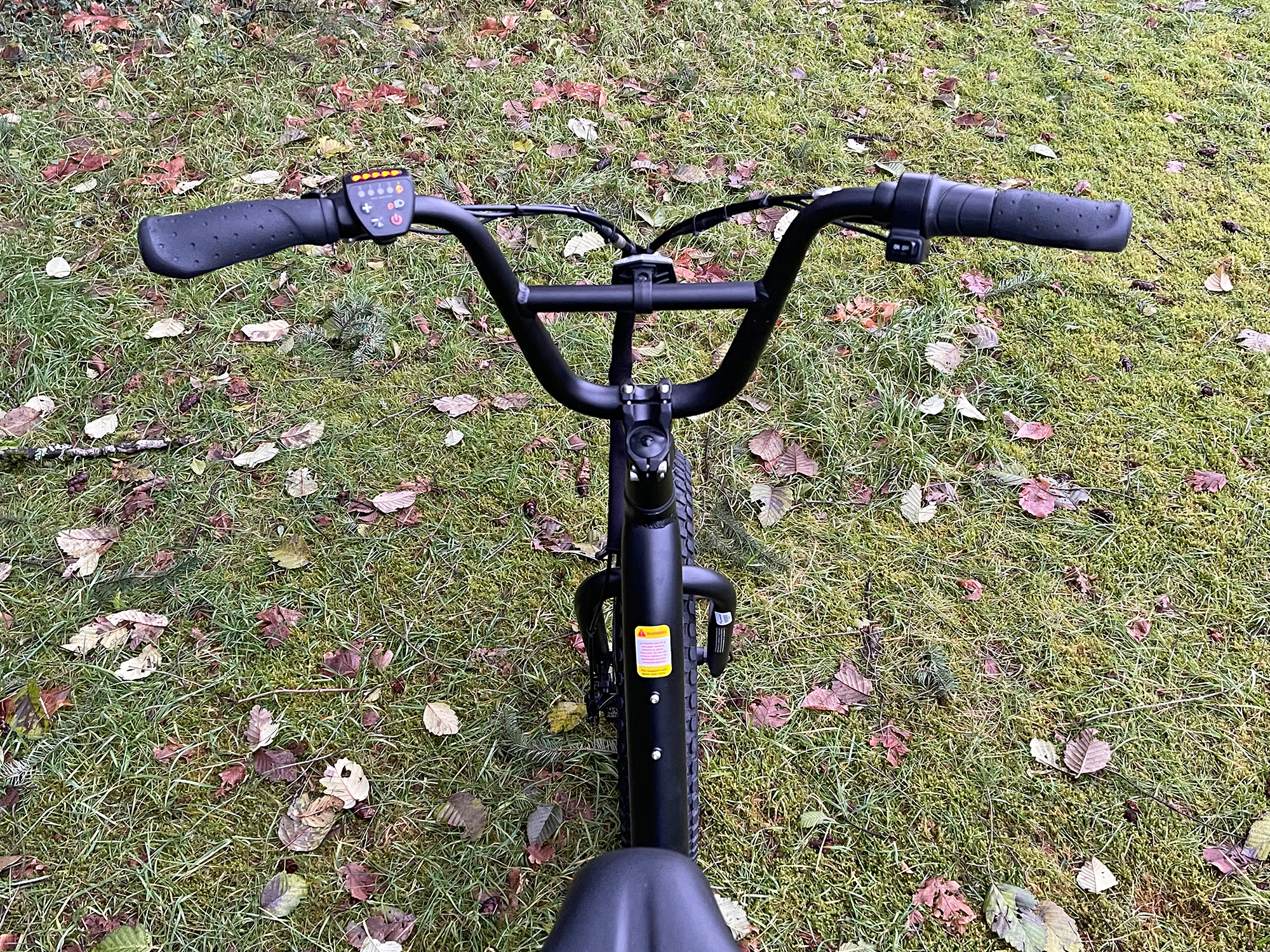
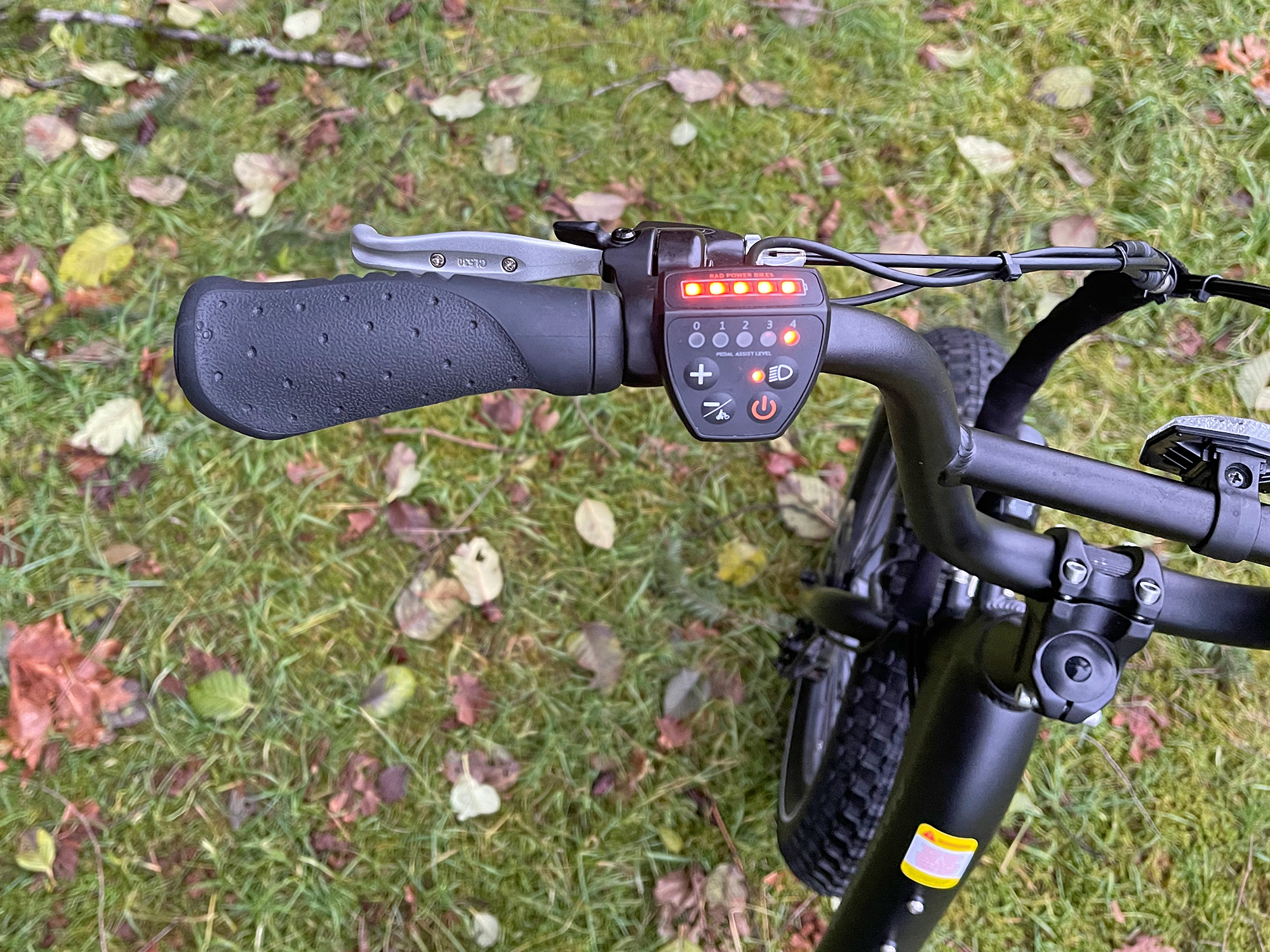
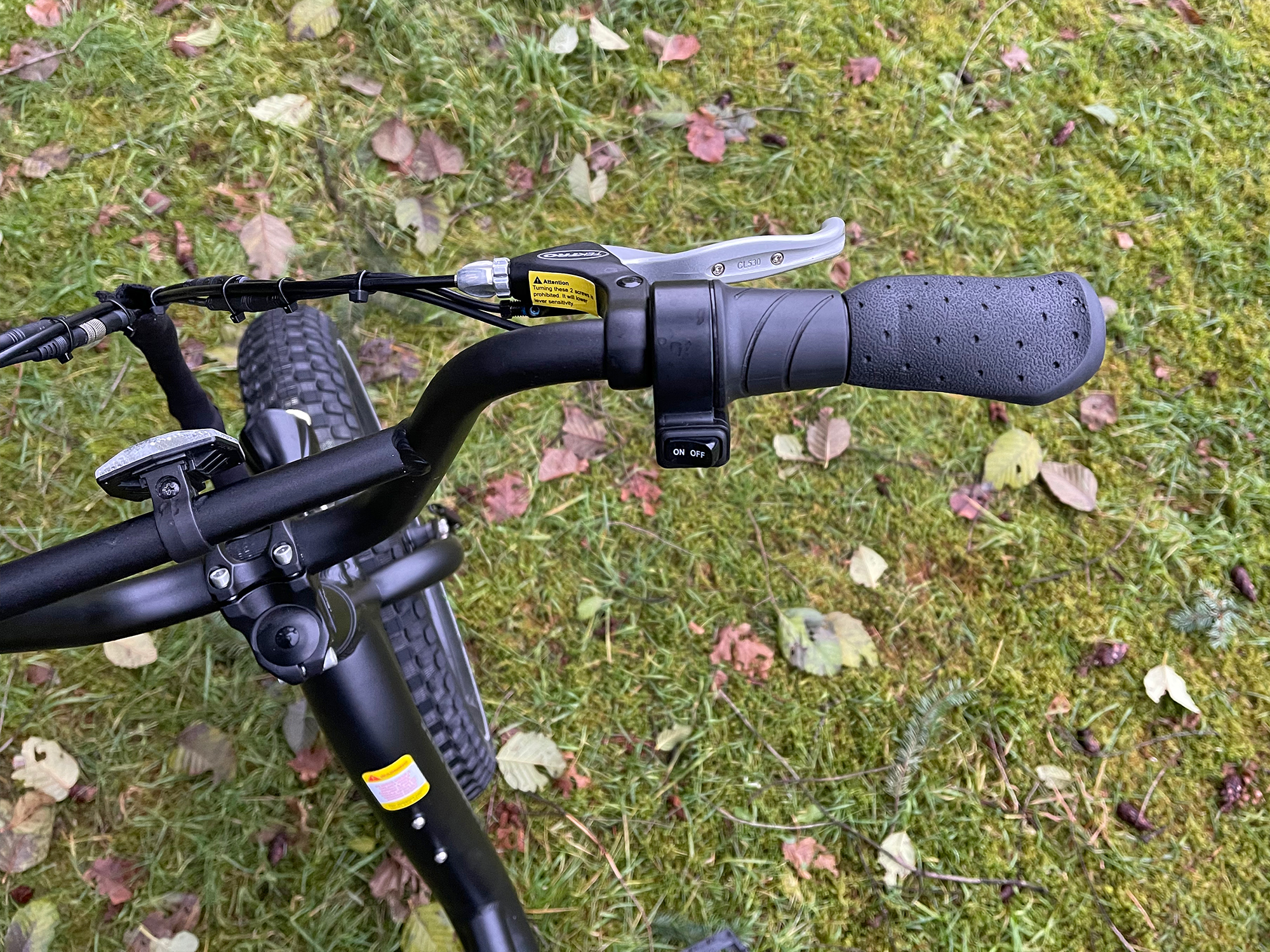
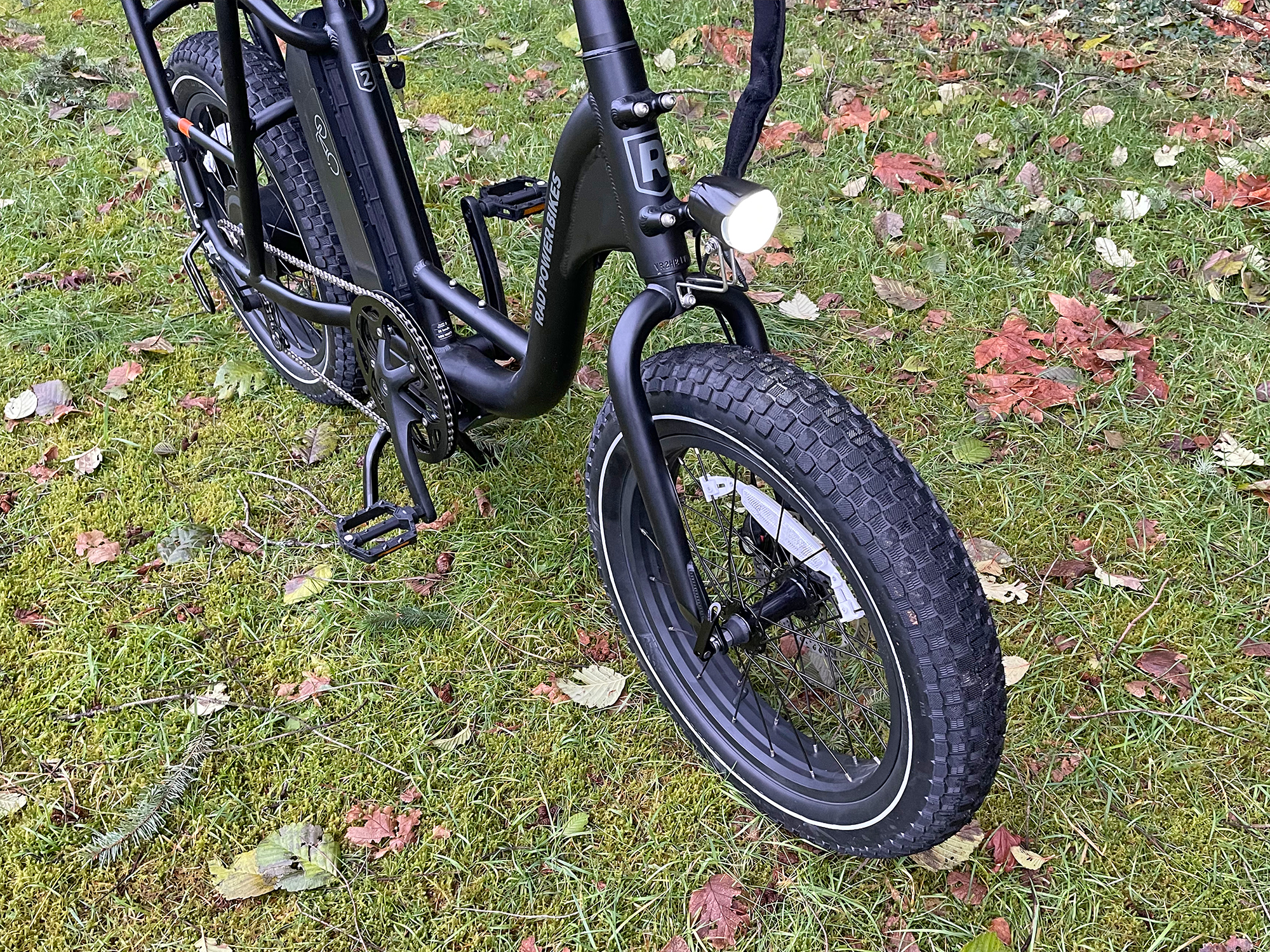

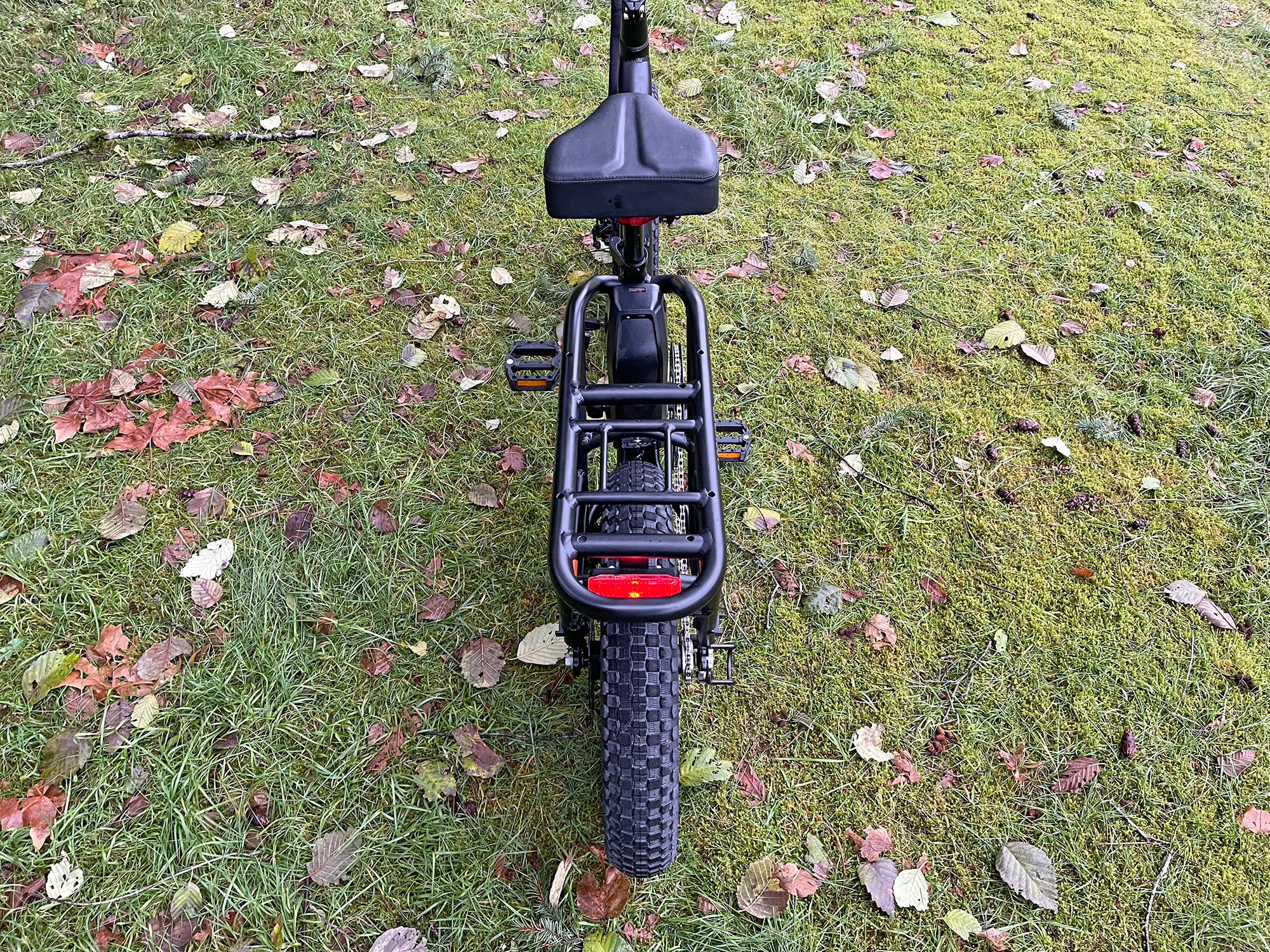
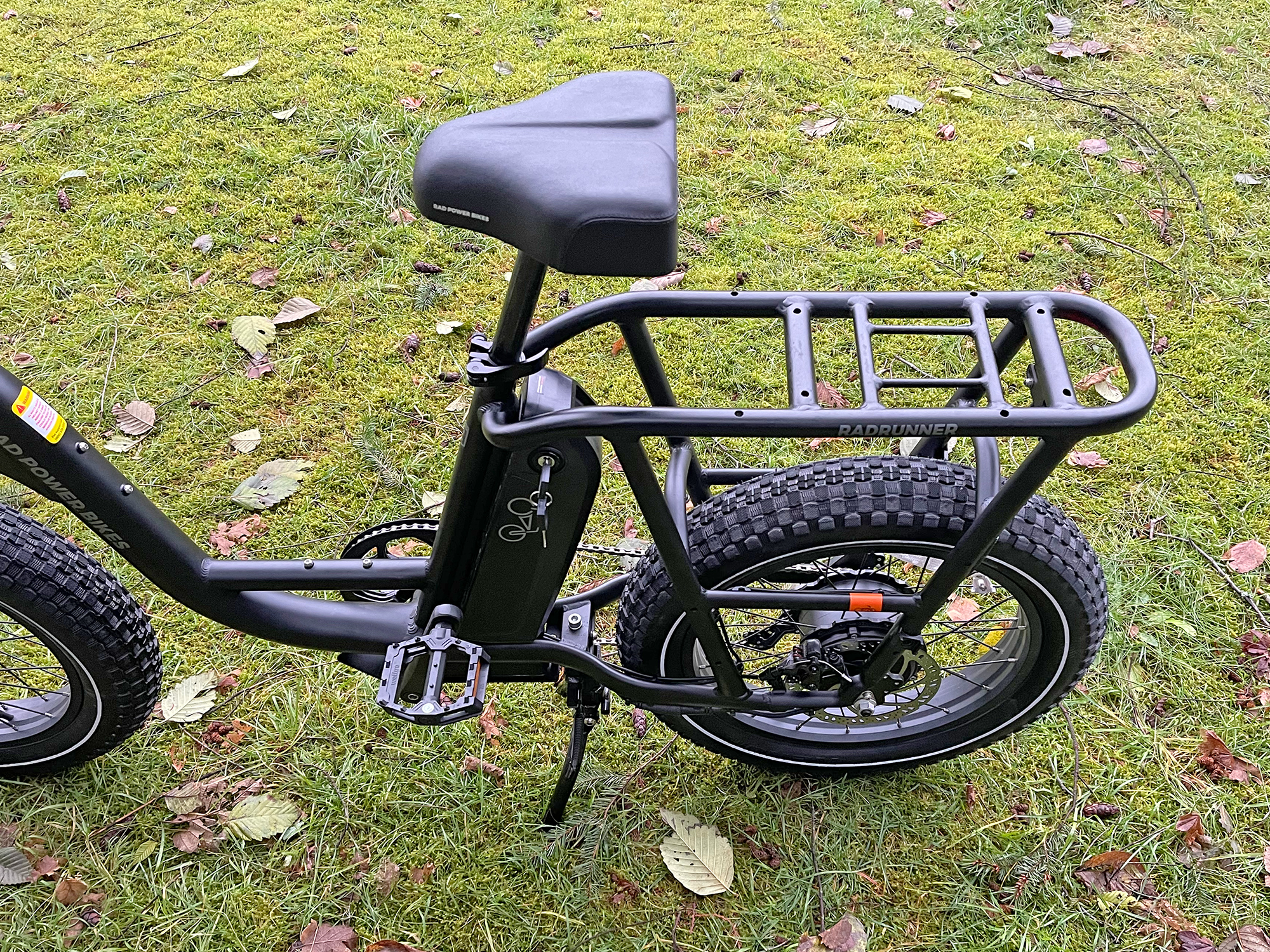

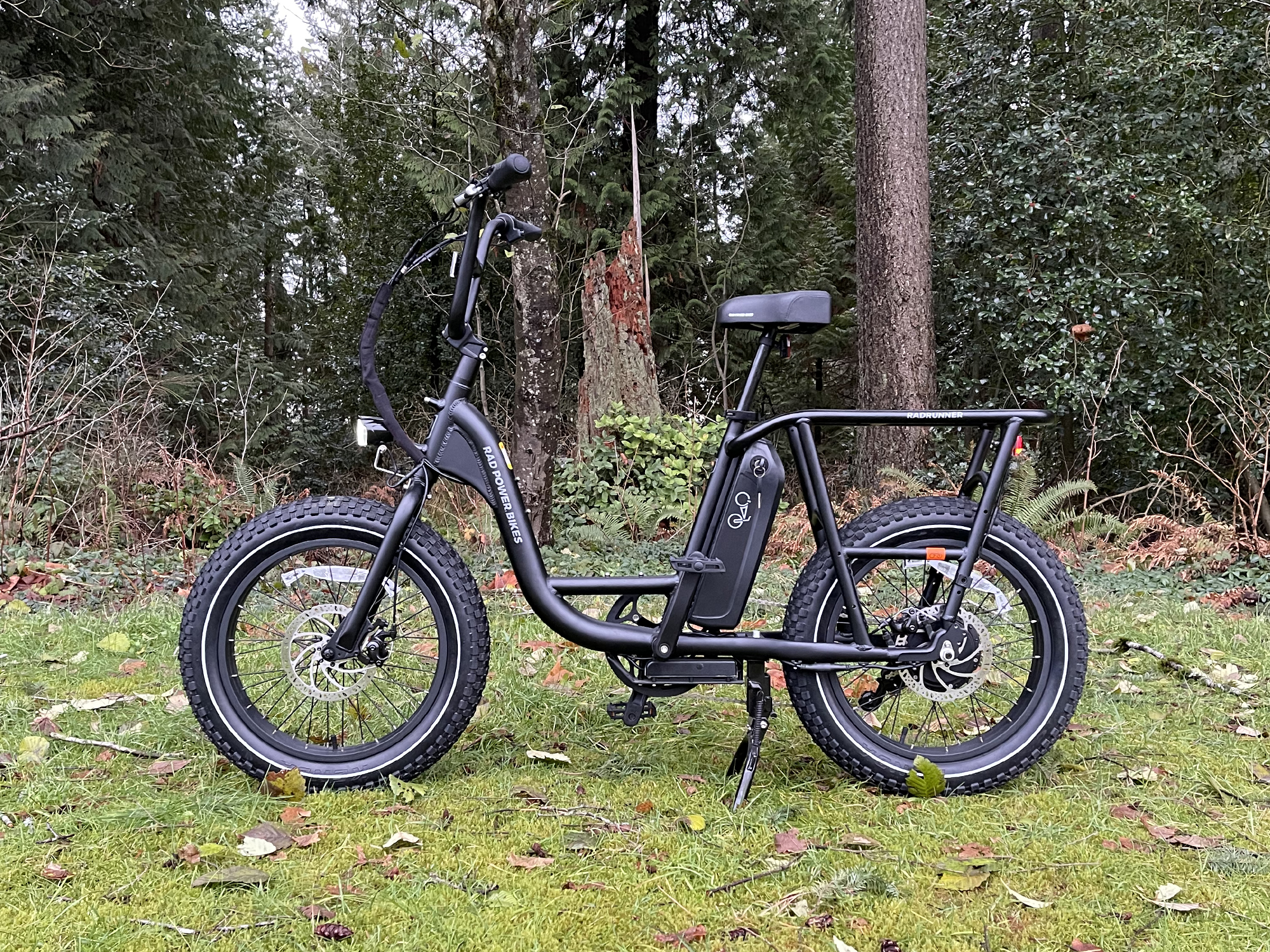
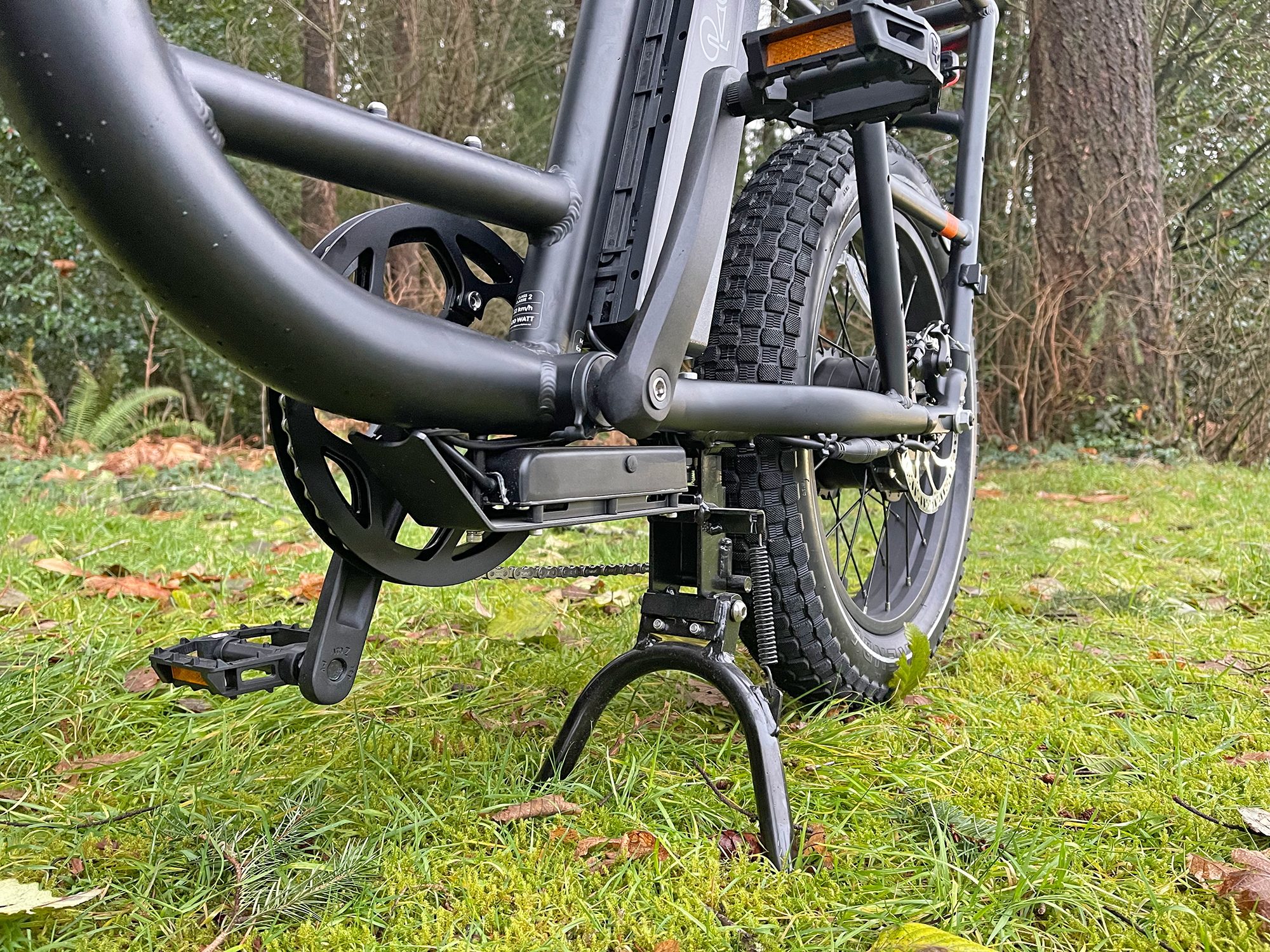
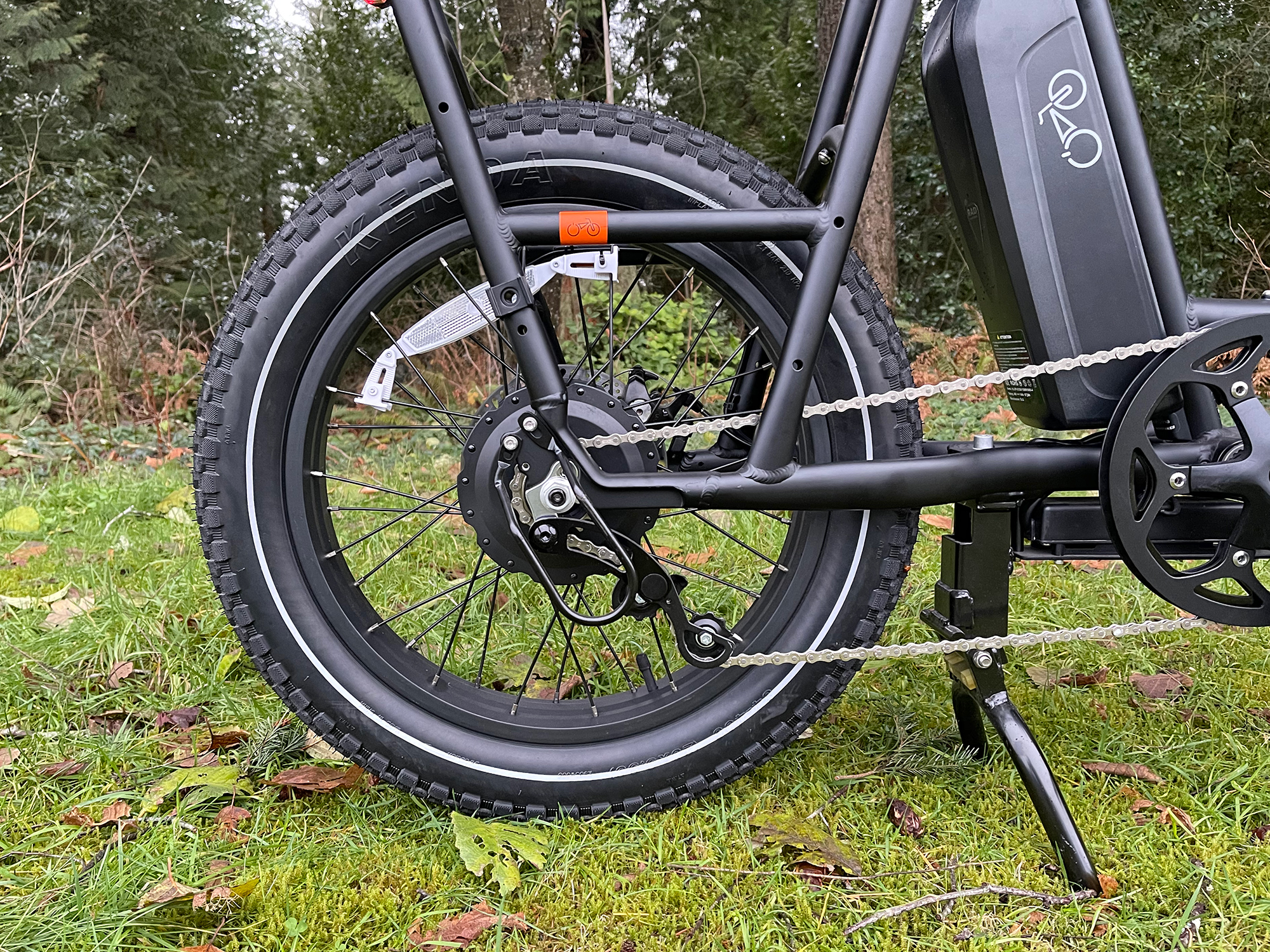
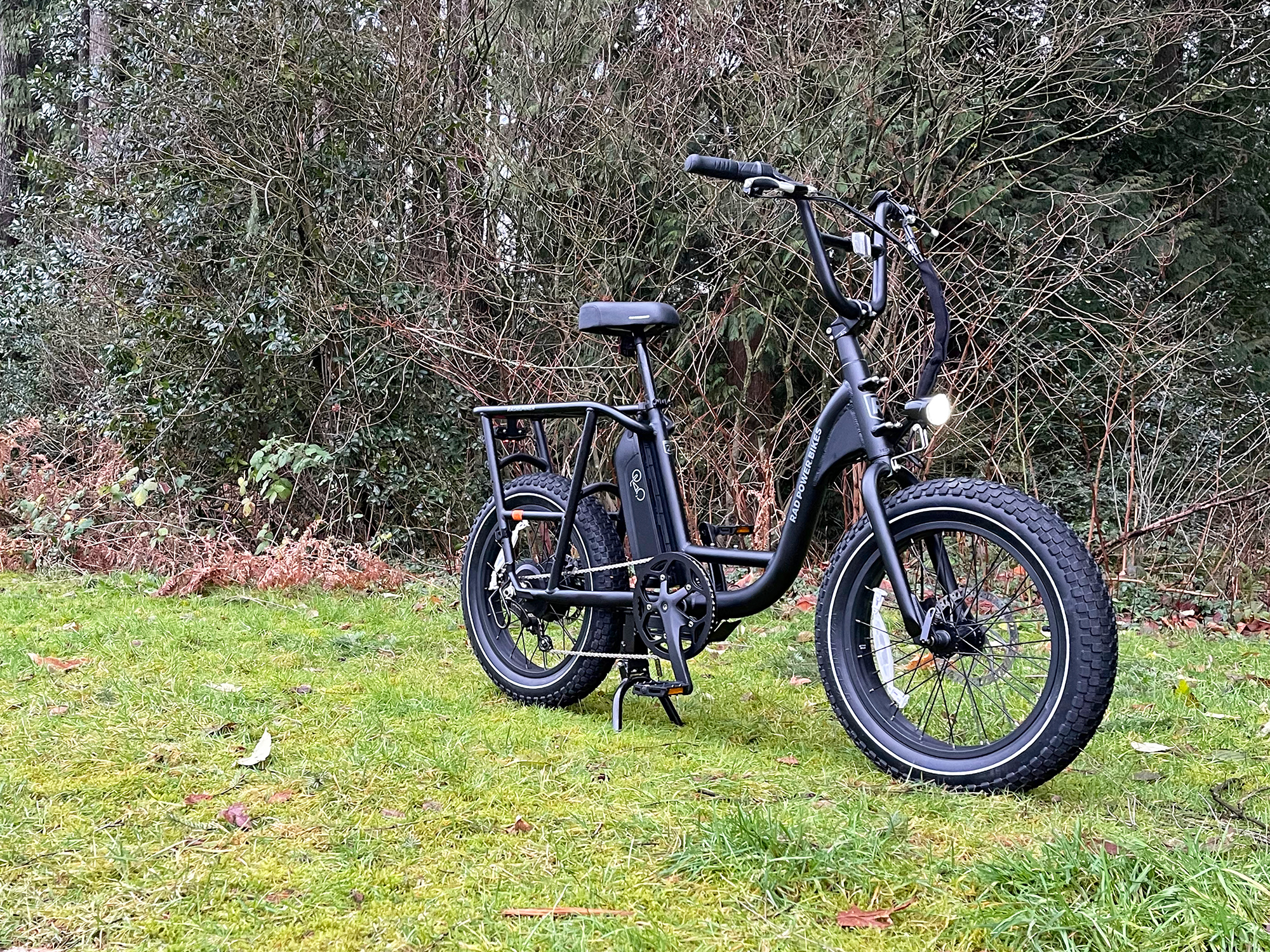
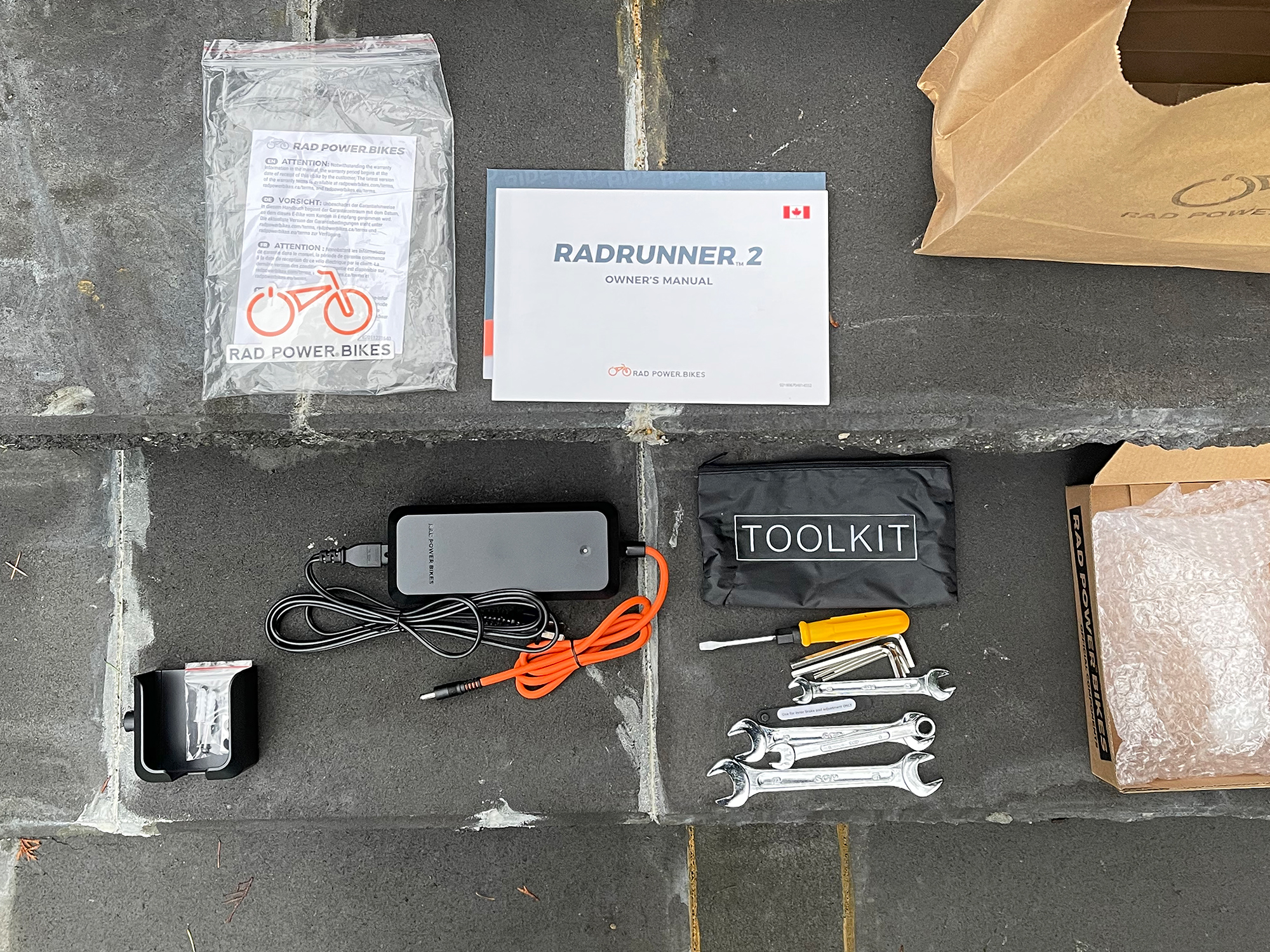
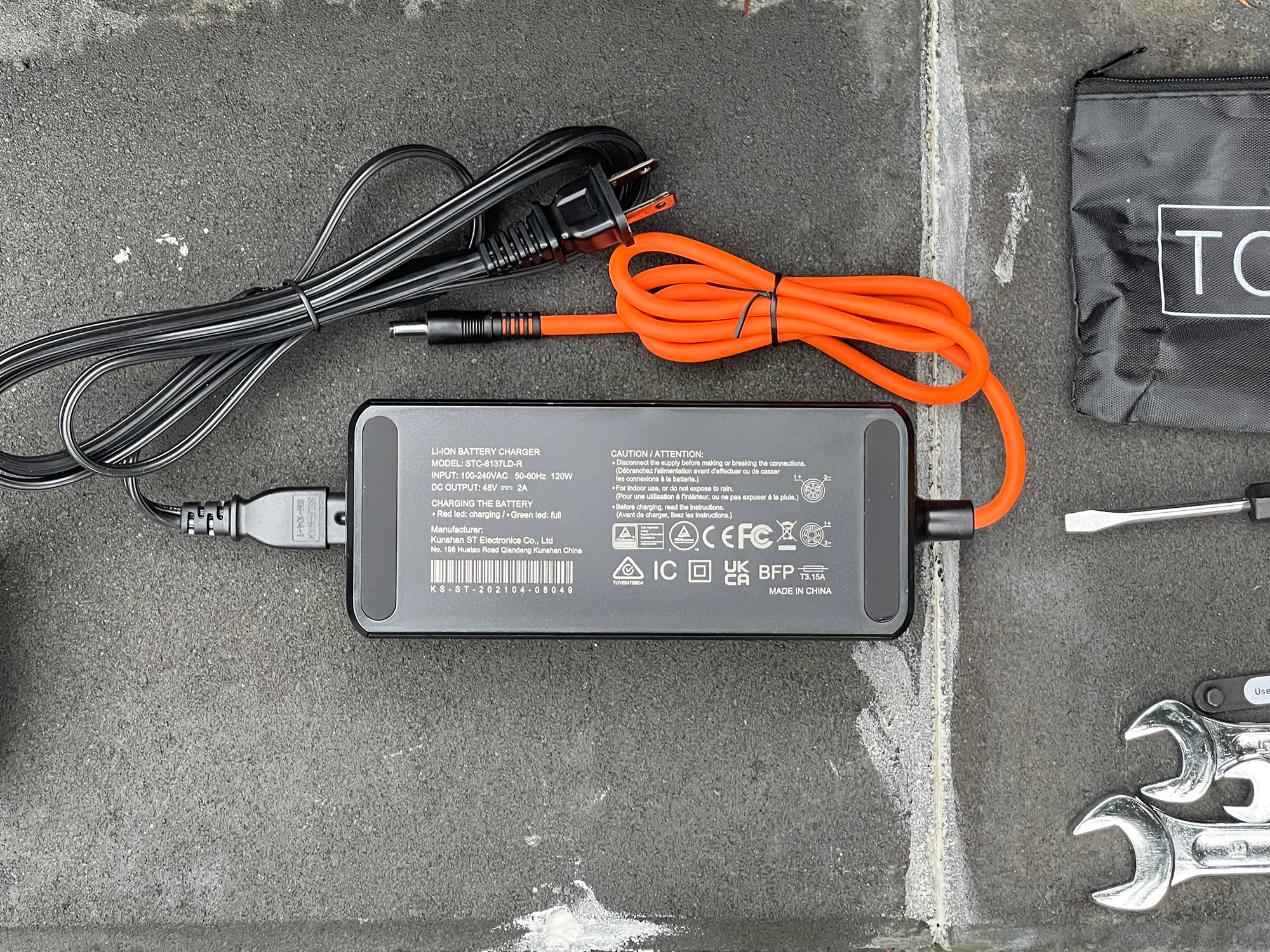
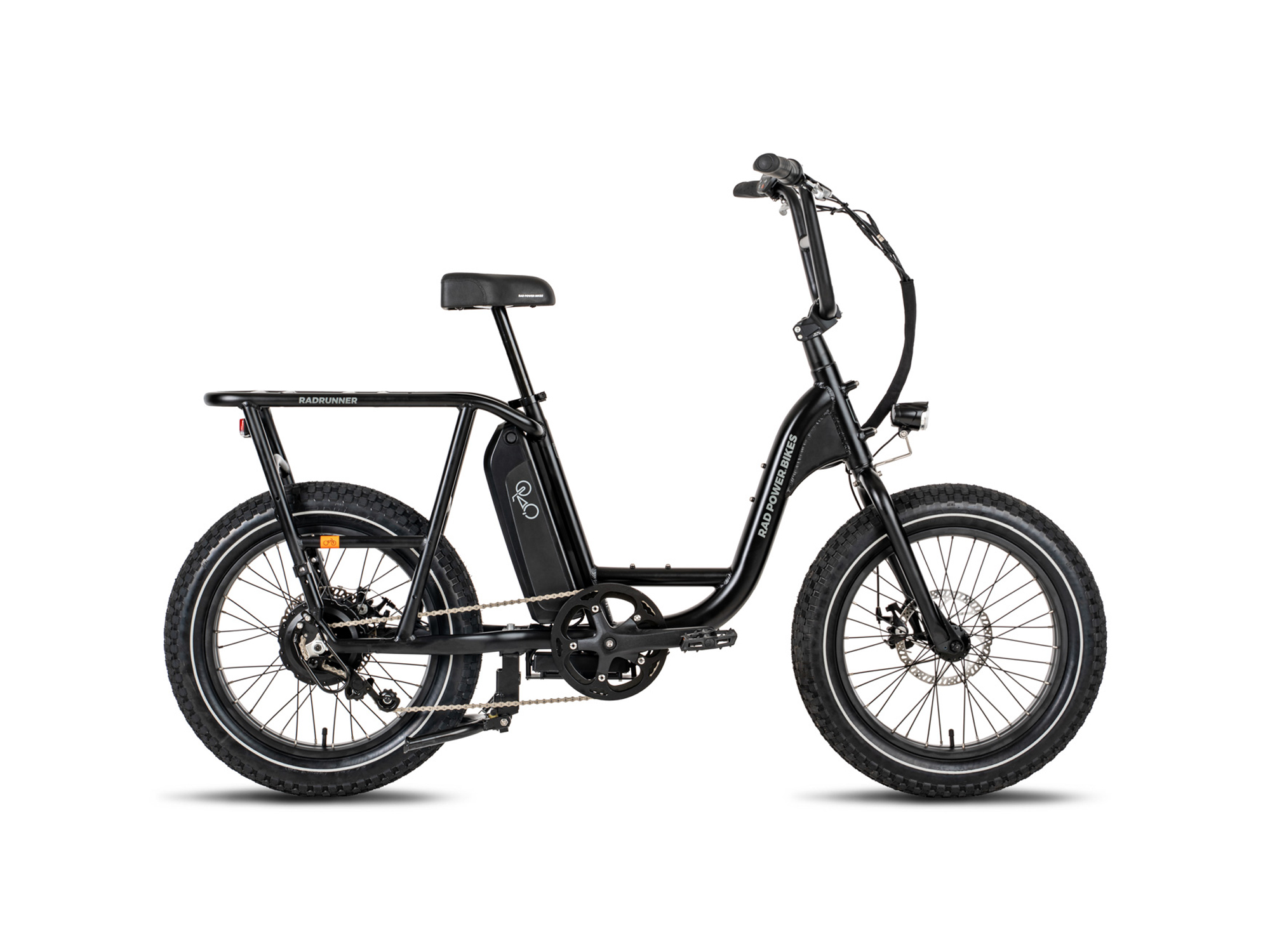
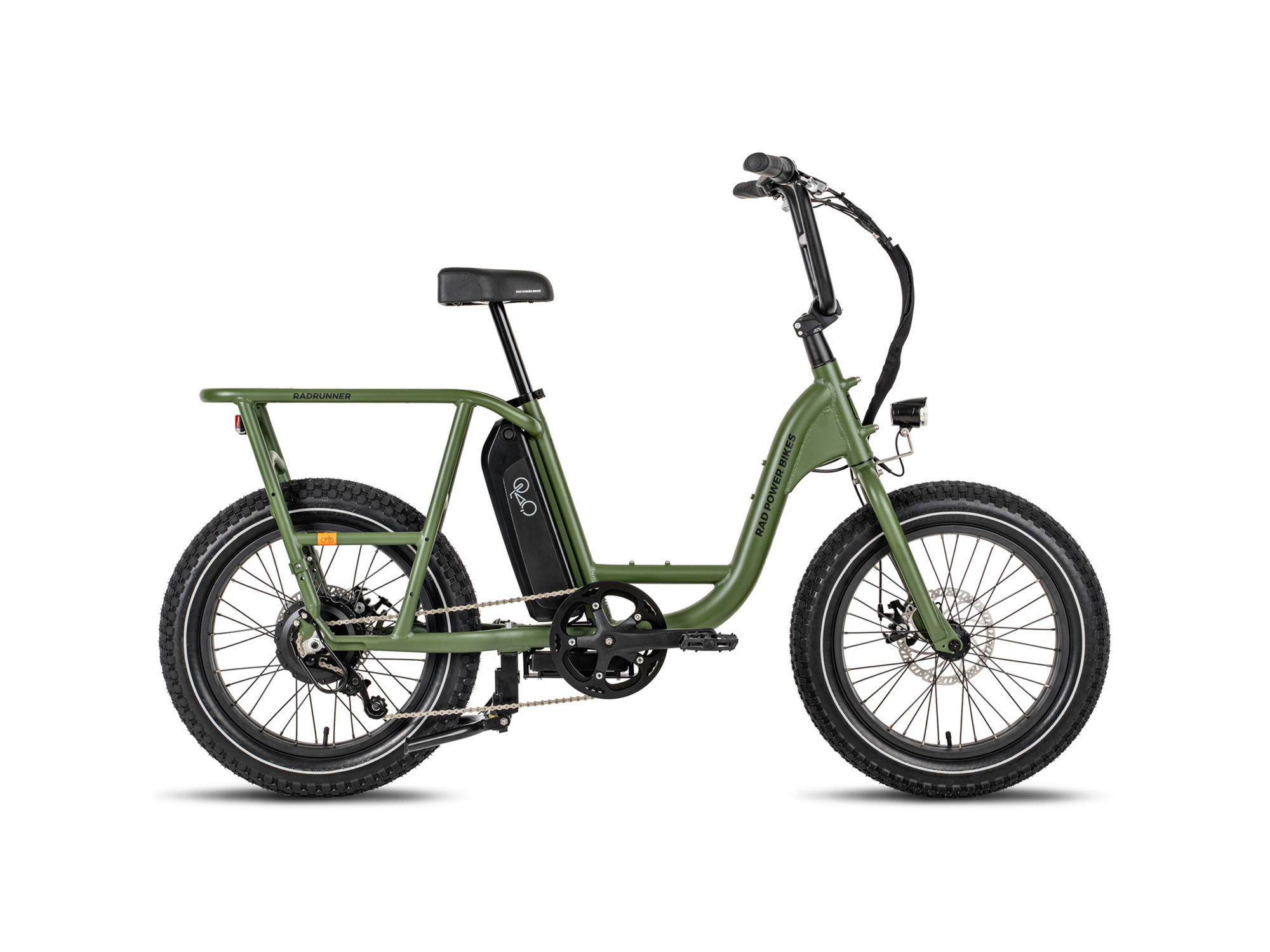

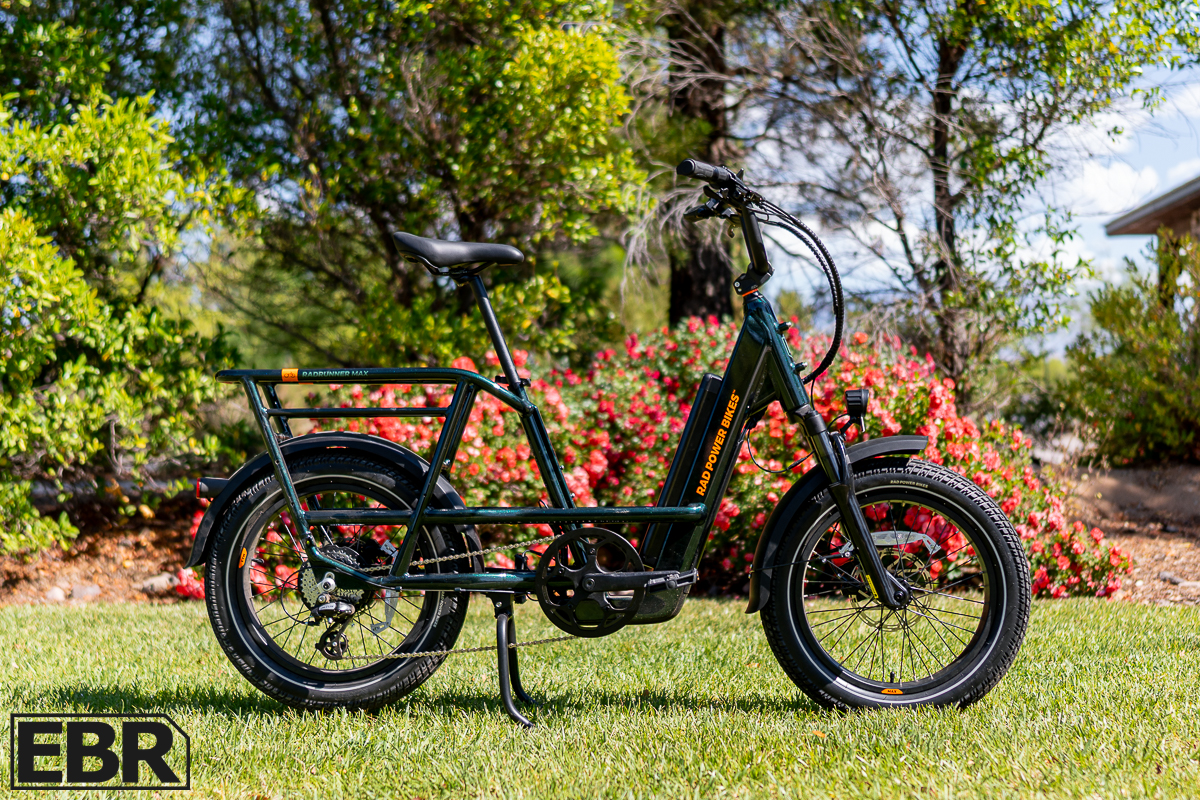
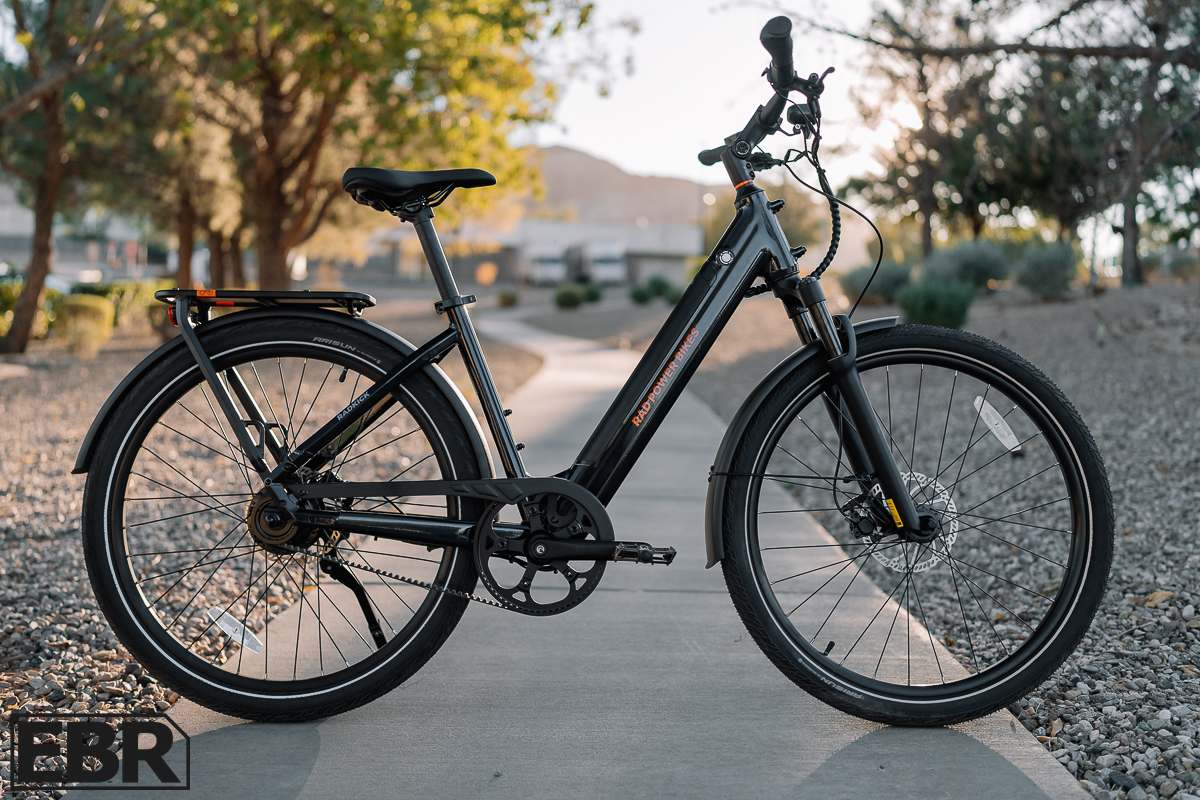
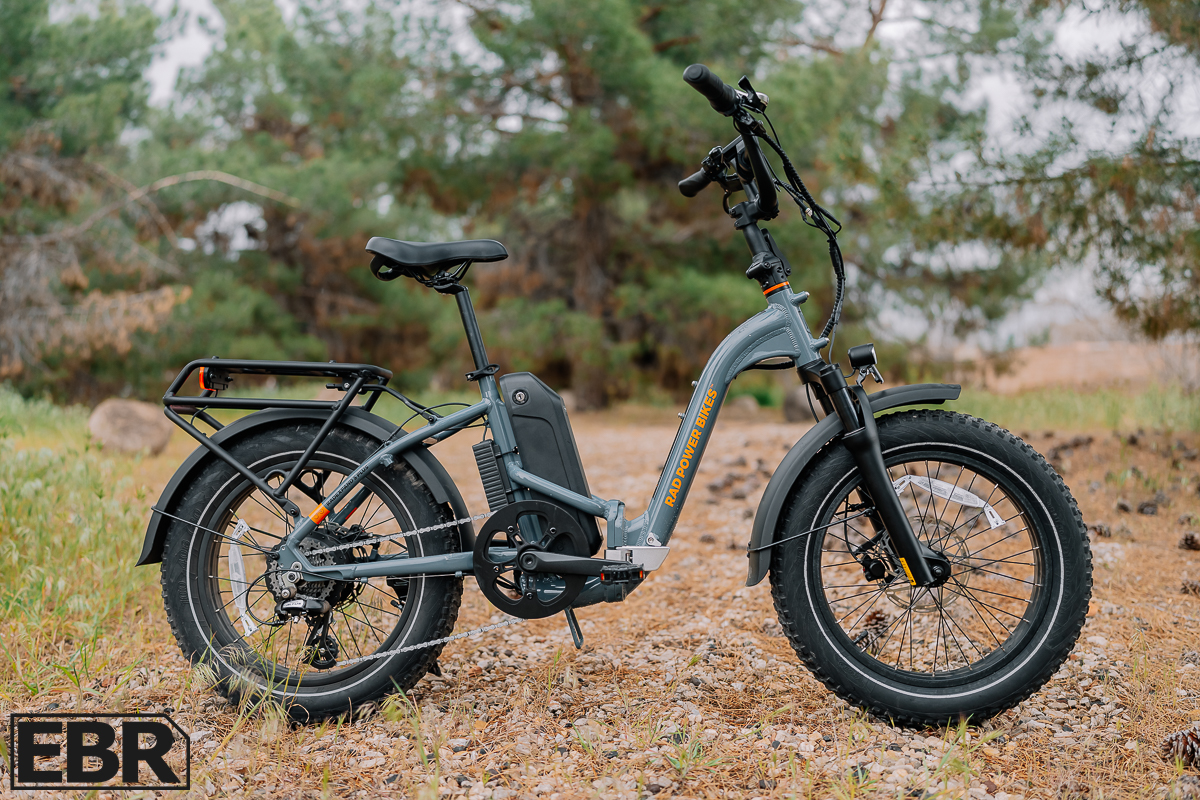
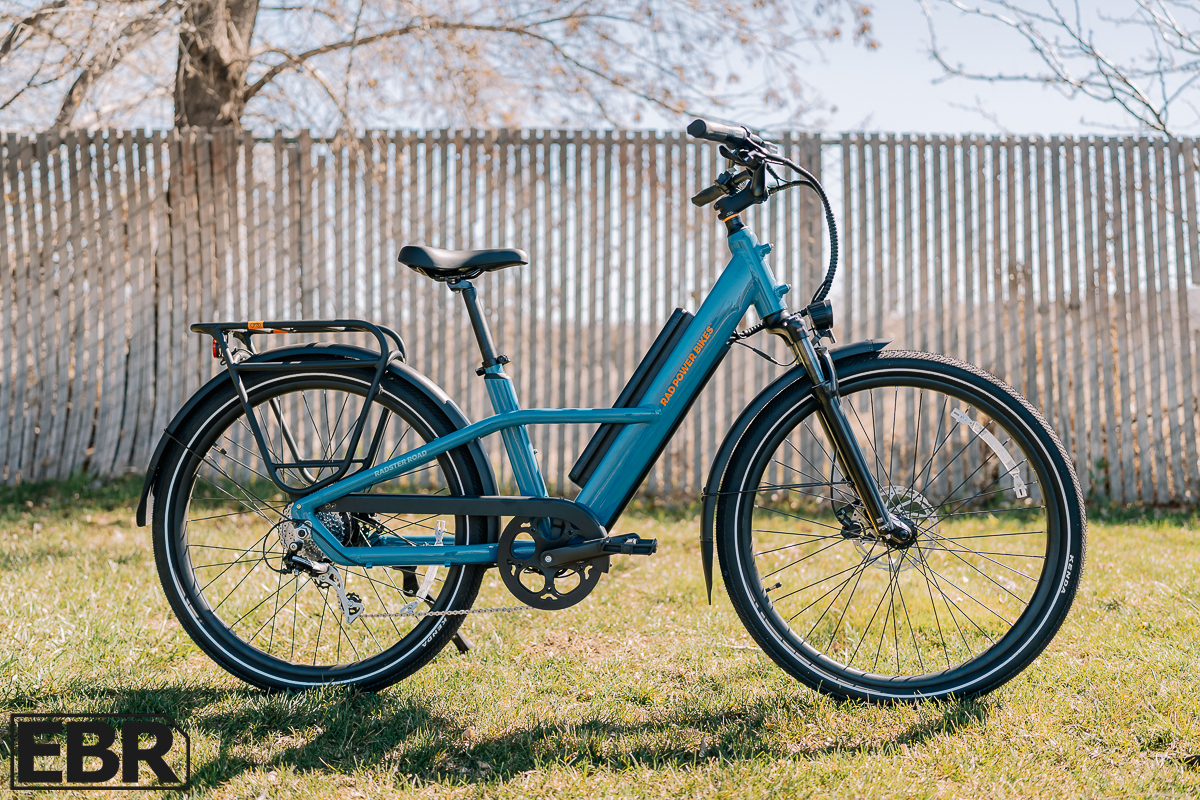
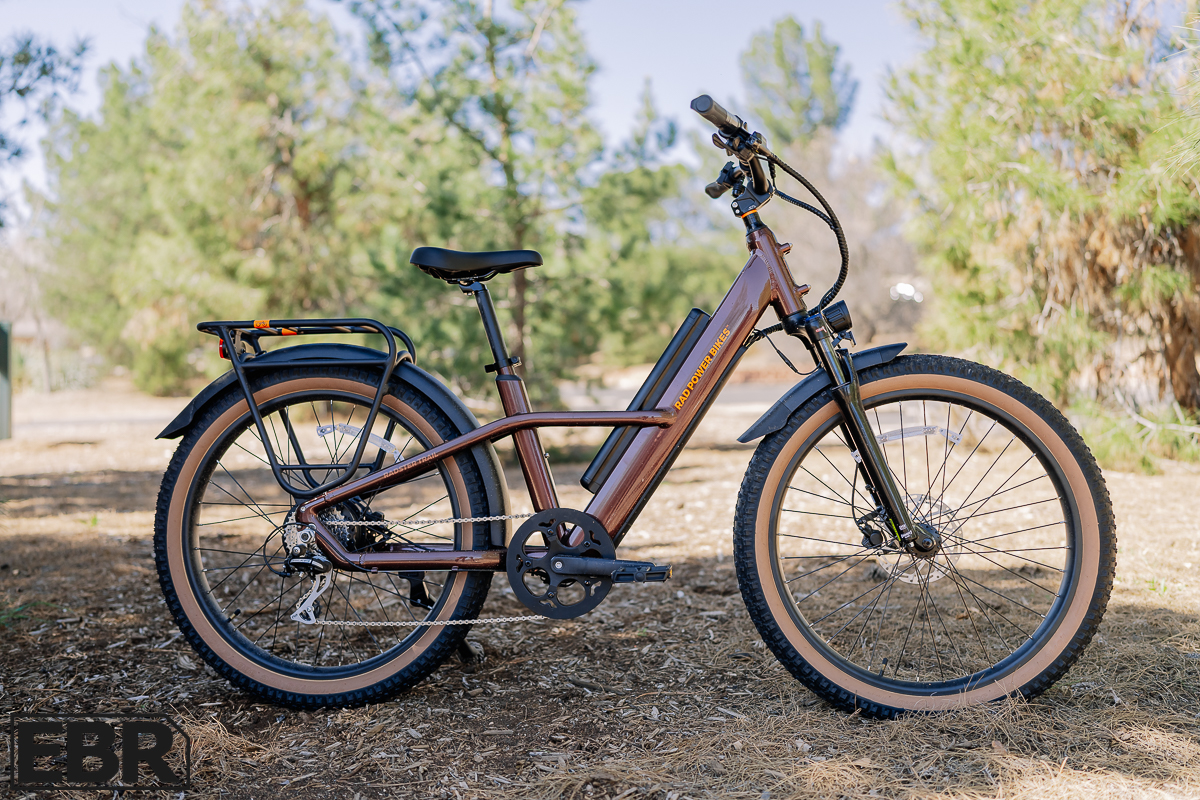
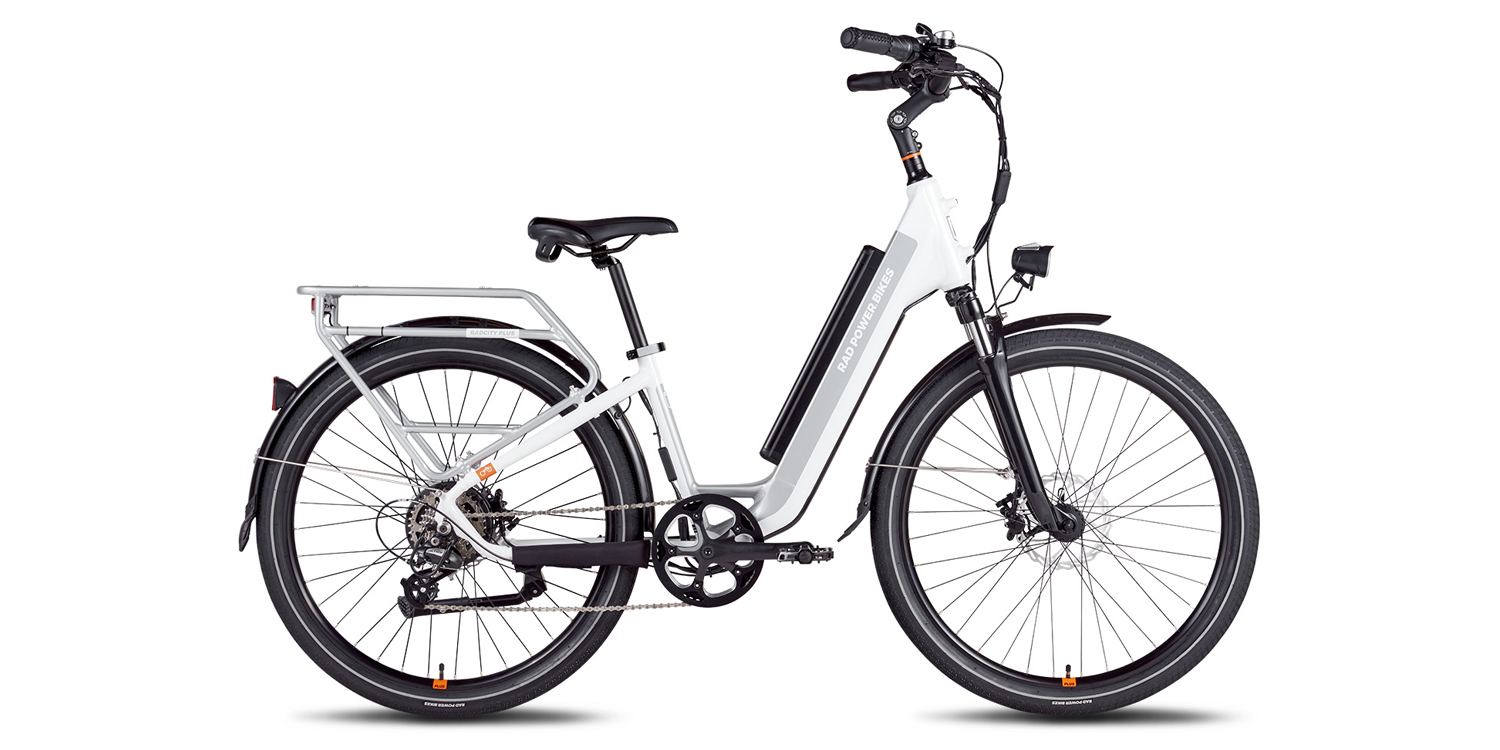
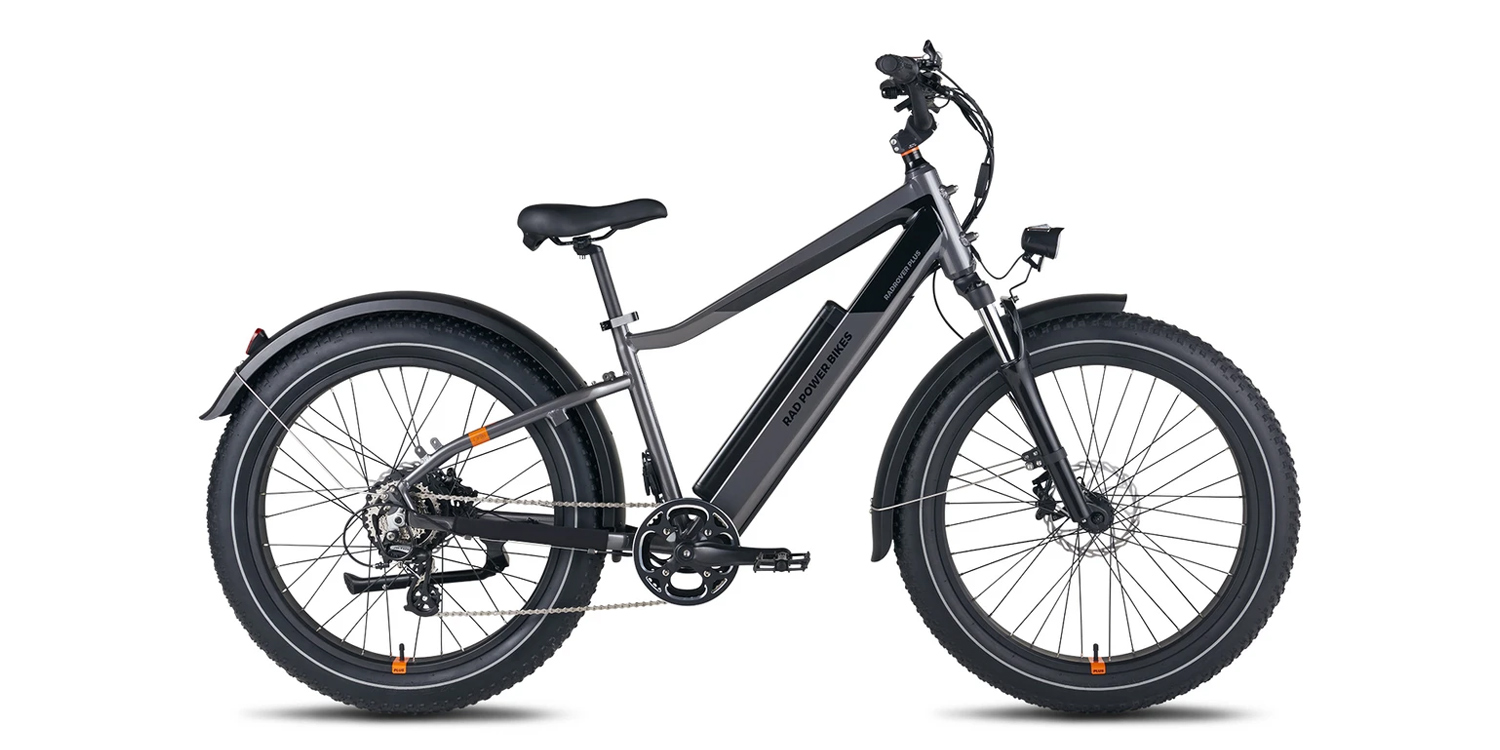
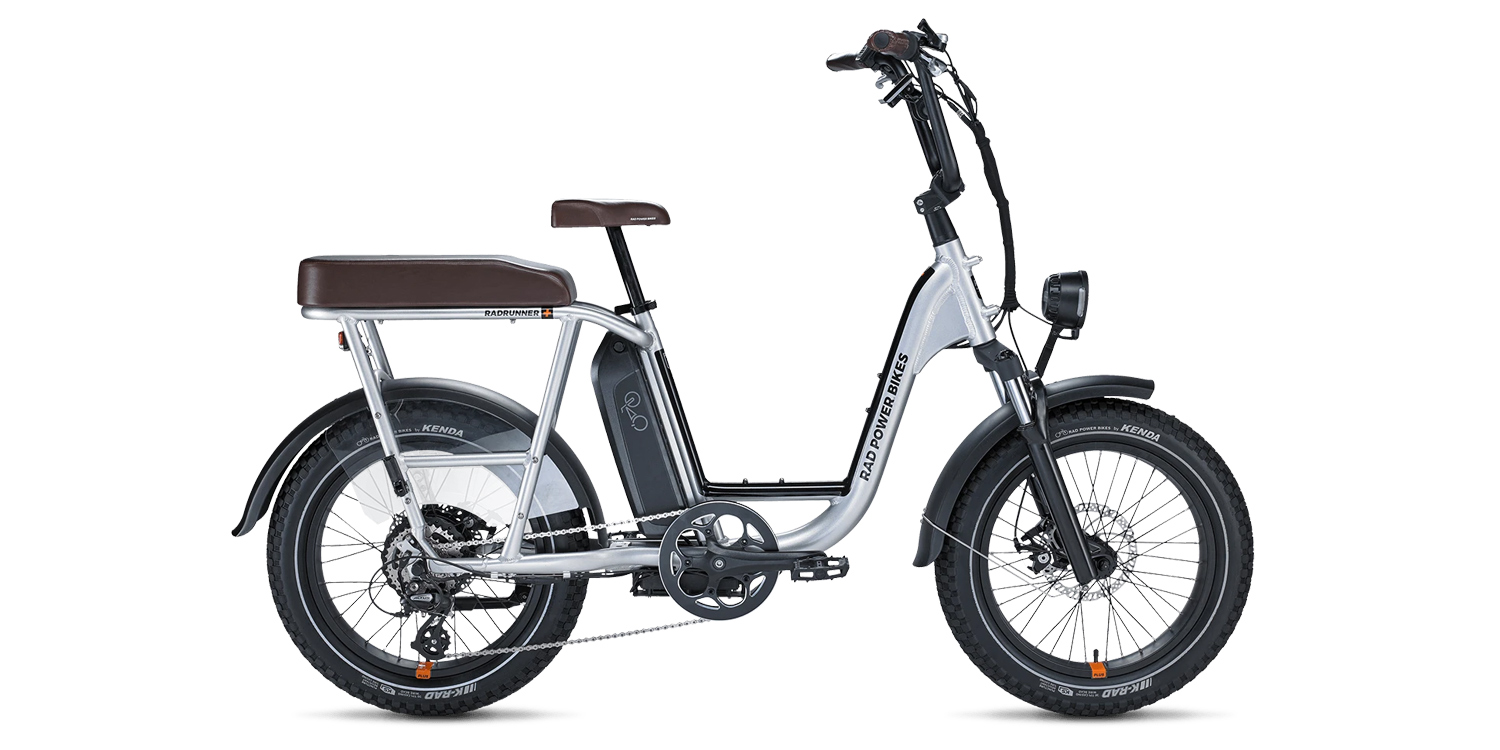
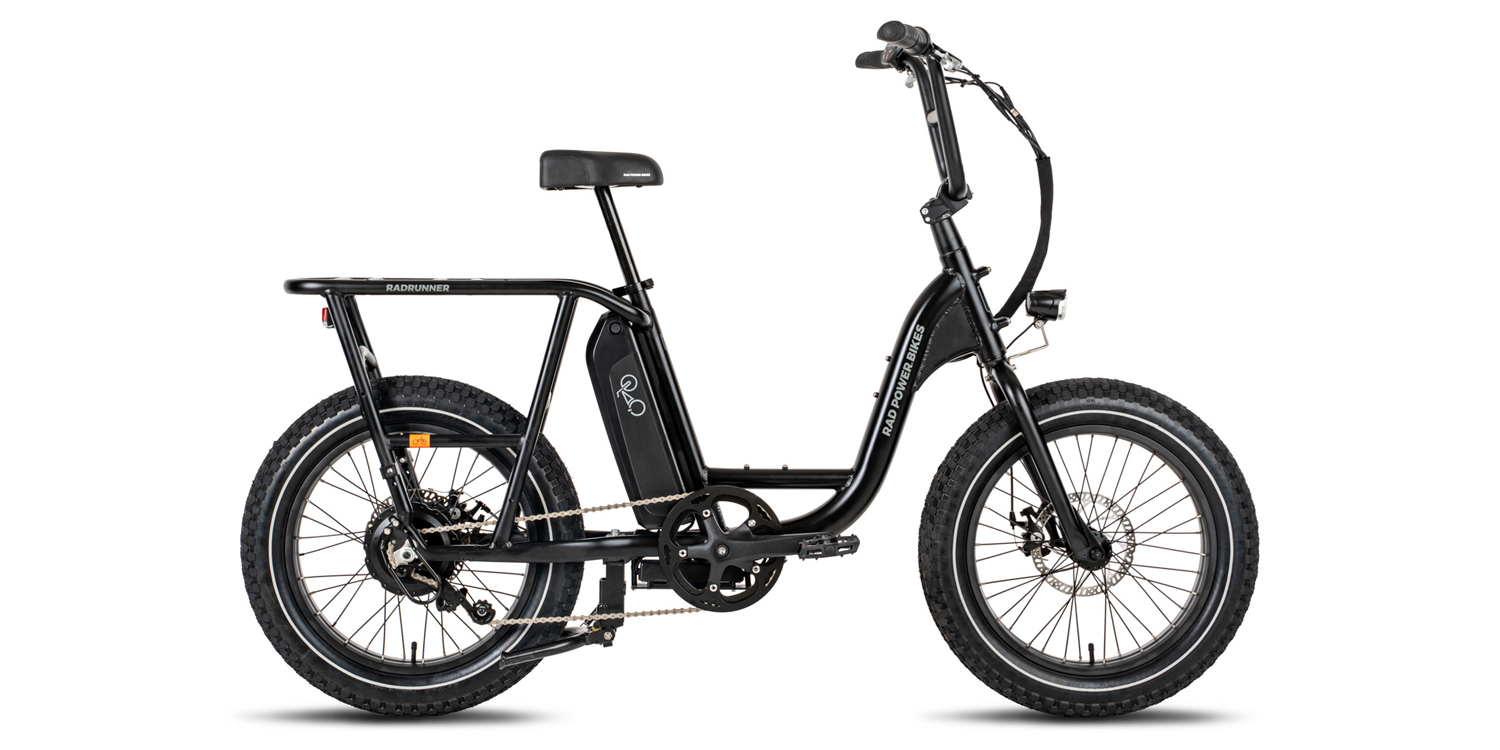
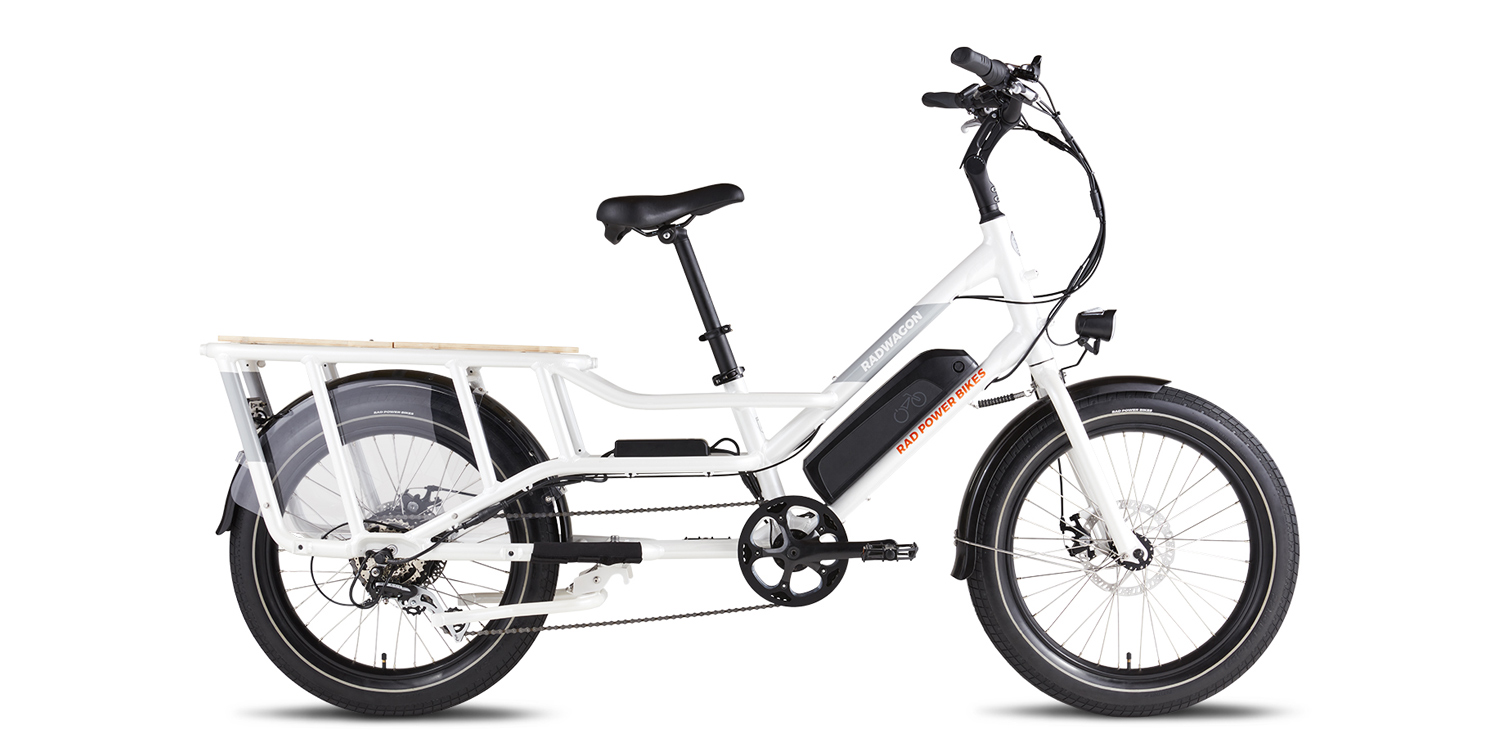
Aaron says
We bought an OG RadRunner back in 2019, have had a ton of fun bopping around on it, and I’ve been looking forward to the new model for a while now. Now that it’s here, I’m honestly really confused by it. Like, the big improvements are… a head tube adjustment and a thicker saddle? Am I missing something, or is this a super underwhelming update?
I’m scratching my head trying to understand their thinking. The RadCity update a couple months ago was a great upgrade that showed some clear thought and investment. They switched to hydraulic brakes, a better integrated battery design, a controller embedded in the frame, etc. Those are all significant changes that address real friction points. In comparison, the RadRunner update is such a minor tweak to the original model that I’d bet most people wouldn’t even notice the changes.
Can anybody shed light on why this is? Are they keeping this model bare-bones to target the affordable end of the spectrum or something? Is it just a volume thing, and it’s not worth investing design/engineering $$$ in this model? Is there any hope that they’ll introduce a RadRunner2 Plus that incorporates some of the real upgrades from the RadCity models?
Still a big Rad fan, but if this is the best they can offer in the “utility e-bike” category it’s gonna drive me to start looking elsewhere.
Court says
Hi Aaron! I was also a bit surprised when they mentioned the new model and I asked about it. I was told “new graphics, more comfortable saddle” and then I dug really deep to find that the head tube angle is different, the motor power cable positioning has been improved, and the charger has been upgraded a bit. I think you’re correct that this is a price point model… but you can get a better version by paying more for the Plus model which has the suspension fork, hydraulic disc brakes, improved headlight, and passenger kit. The geometry for that model is optimized for the suspension fork, and it comes in silver vs. black or green like the standard. I hope this info helps you out, and here’s my review of the RadRunner Plus… it’s a better offering for the utility e-bike category for those who are willing to spend more.
Aaron says
Hi Court. (Thanks for chiming in on this. You’re awesome. This site is awesome.) The Plus model has suspension and better headlight, but it doesn’t have hydraulic brakes, right?
The brakes going out of adjustment has become a regular friction point with our 2019 RadRunner, and when I saw the specs for the new RadCity (with hydraulics), I assumed they’d be rolling out across their lineup as new models came out. The battery is also very prickly sometimes to get yanked out of the mount, so the new frame-integrated version was gonna be another welcome upgrade.
Have you by any chance picked up any clues about whether the RadCity upgrades will make their way into other models? Are they gonna release a RadRunner 2 Plus that could have them? (longshot I know, but worth a try :) )
Anyway, thanks for the site, it’s an amazing resource!
Court says
Oh yeah, sorry for the mixup Aaron! The RadRunner Plus does not appear to have hydraulic. I was also surprised when reviewing it because, as you suggest, the other Plus models do have hydraulic. Perhaps the next iteration of the RadRunner Plus will have them? It might be something you could upgrade aftermarket on your own or with the help of a shop if you want to ditch the mechanical brakes. It just might be difficult to find levers with the motor inhibitors and brake light activation that are hydraulic compatible :/
Bryant says
Just one correction, one comment, and one question:
Court says
Hi Bryant, thanks for the feedback! The prices changed recently and there was a moment where I think the price gap was $300, but perhaps I made a mistake… it’s tricky to keep track, I’ve updated the number based on your feedback. The charger upgrade is something that I noticed when they switched to orange wires vs. having it all in black. I asked if anything else changed and was told that they improved the shielding on the wiring so it won’t interfere with other electronic devices as easily as some of the very cheap/basic chargers. Regarding the optional passenger seat thickness… I am unsure if it has changed. I want to say yes, but it may have always been thick enough to be acceptable. I do know that the captain seat saddle is definitely improved. This is something you could ask their customer service chat or call in about when placing an order, they have a responsive team :)
Cord says
Extremely happy with my purchase of a RadRunner Plus as a Christmas present. My son rides it to school daily. We added the front basket and cell phone holder. While I love the front light (style and output), it rarely stays pointed straight. We also had an issue with the battery not charging. I sent a ticket in and had a response within 15 minutes that linked to an online solution and a response from a REAL PERSON. The problem was solved in less than 24 hours. THIS is the benchmark for great service, IMHO.
I can’t tell you how important this is with an electric bike. If the product isn’t engineered correctly and/or if the company doesn’t support their product, the “deal” you got on your bike is worthless. I know this feeling, having bought an Eahora X7 Plus and having to deal with a China-based “service” department that never responds until the next day. One year later, our $1,500 Eahora X7Plus is an expensive paperweight while our RadRunner Plus is simply a fun, reliable, well-made bike that’s supported by a company that actually has people in the USA!
Court says
Wow, that’s the kind of testimonial I love to see. So glad your son is enjoying the new bike Cord, what an awesome Christmas present to get your son!! I remember being so excited about my first ebike, and enjoying the freedom that it offered on my daily commutes to work. Cycling is so much fun… but ebikes usually take some extra care to maintain and keep running. Yeah, it definitely makes a difference when the company stands behind their product, that’s something I appreciate about Rad because they seem to keep prices reasonable but offer great support. Your comment made my day, thanks for taking the time to share it. Happy New Year!!